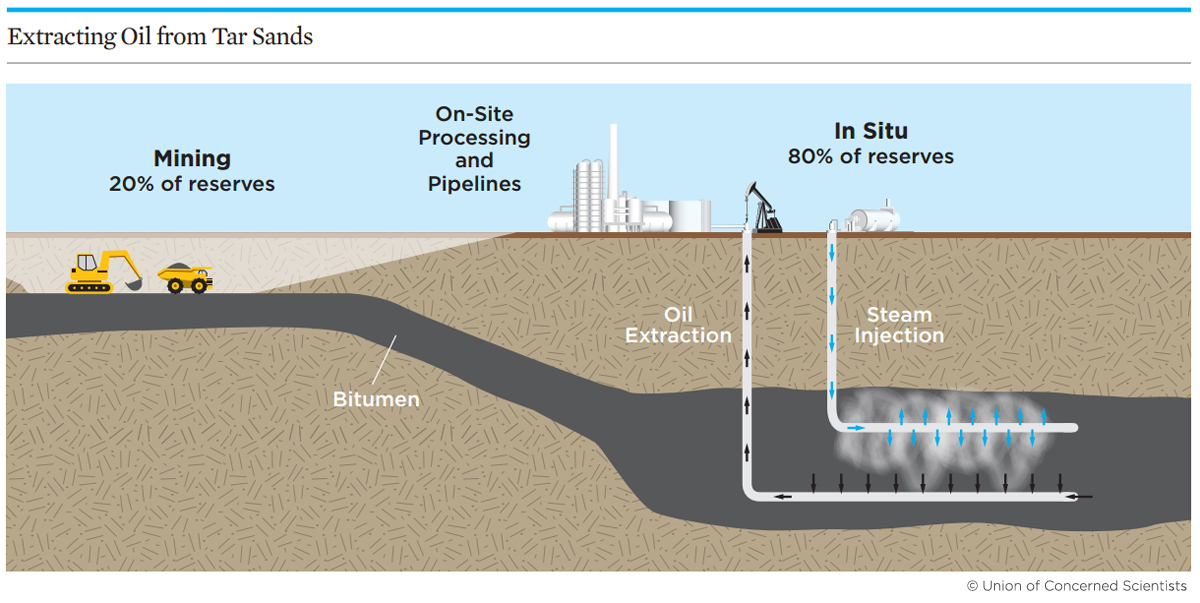
“Red Flag” Over The Tar Sands’ “Elephant in the Room”
New concerns have been raised over the ecological impact of in-situ tar sands mining after research was published yesterday revealing that high pressure steaming can discharge pollutants into the environment
New concerns have been raised over the ecological impact of in-situ tar sands mining after research was published yesterday revealing that high pressure steaming can discharge pollutants into the environment.
Canadian scientists have released a study, published in the journal Environmental Pollution, which reveals that extraction of bitumen using injected steam has released low levels of toxins into a small lake near a site where there has been extensive in-situ development since the mid-eighties.
The findings have clearly worried the regulators. “It’s a clear red flag that something’s going on and we need to look into it,” Bill Donahue of Alberta Environment’s Monitoring and Science division told the local press, in response to the findings.
Alberta Environment has real reason to be worried. Whereas the iconic images of a Mordor-type tar sands landscape reflect open cast mining, just over the majority of the tar sands is now extracted via in-situ mining.
The majority of future tar sands extraction will involve in-situ too, which has been widely criticised for its high carbon intensity. Fossil fuels are burnt to inject high-pressure, high-temperature steam underground to soften the underground bitumen so that it can be pumped up to the surface.
Despite its carbon intensity, the tar sands industry has been quick to claim that this extraction method is less ecologically harmful because you do not have to bulldoze vast open top mines or use highly polluting tar sands settling ponds.
However, the industry could be leaving another lethal legacy.
When the scientists took core samples of sediment in a lake near an in-situ site they found that potentially toxic chemicals, including known carcinogens associated with petrochemicals were 137 per cent higher than in 1985. Some of these chemicals are known as Polycyclic Aromatic Hydrocarbons, or PAHs.
“What we see is that after 1980, when that site became operational, we have an increase in contaminants,” argues York University’s Jennifer Korosi, lead author of the paper. That increase “accelerates after the site was expanded about a decade ago.”
Korosi continues “There are certain PAH compounds that we know are released by forest fires, from traffic emissions, and we don’t see those compounds increasing. We have a number of different ways we can fingerprint hydrocarbons to know where they’re coming from and consistently, the different metrics were suggesting a petroleum-based source.”
She adds “There’s a pressing need to understand how in situ releases contaminants to the environment, because it’s going to be very different than surface mining. At the moment, it’s mostly unknown.”
Although the levels found are still low, there is real reason to be concerned and also to find the pollution pathway. Korosi said the pathway could include pipeline leaks, leaky well bores, process water, groundwater or even underground fault lines.
And now the regulators have vowed to increase environmental monitoring around in-situ sites.
“It behooves us to look into the problem,” Donahue said. The regulator has now admitted, that it has focussed too much on the huge open pits of conventional tar sands mining, compared with in-situ facilities, which Donahue called “a big elephant in the room.”
Donohue added: “One of the issues that was looming was looking into the in-situ industry and looking into what its environmental impacts are — and beyond just contaminant dynamics. That was the obvious next step and we’re starting to do that. The next step is to figure out a plan.”
Maybe it would have made more sense to come up with a plan to monitor the industry’s environmental impact before allowing in-situ mining to go ahead.

